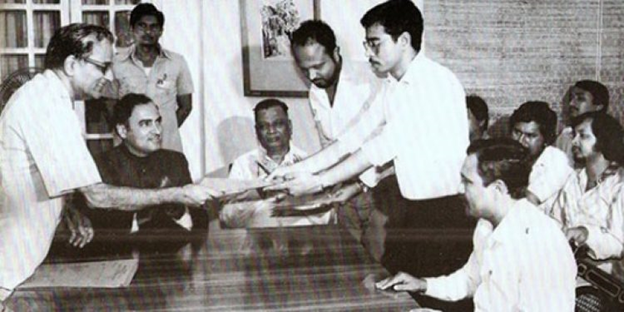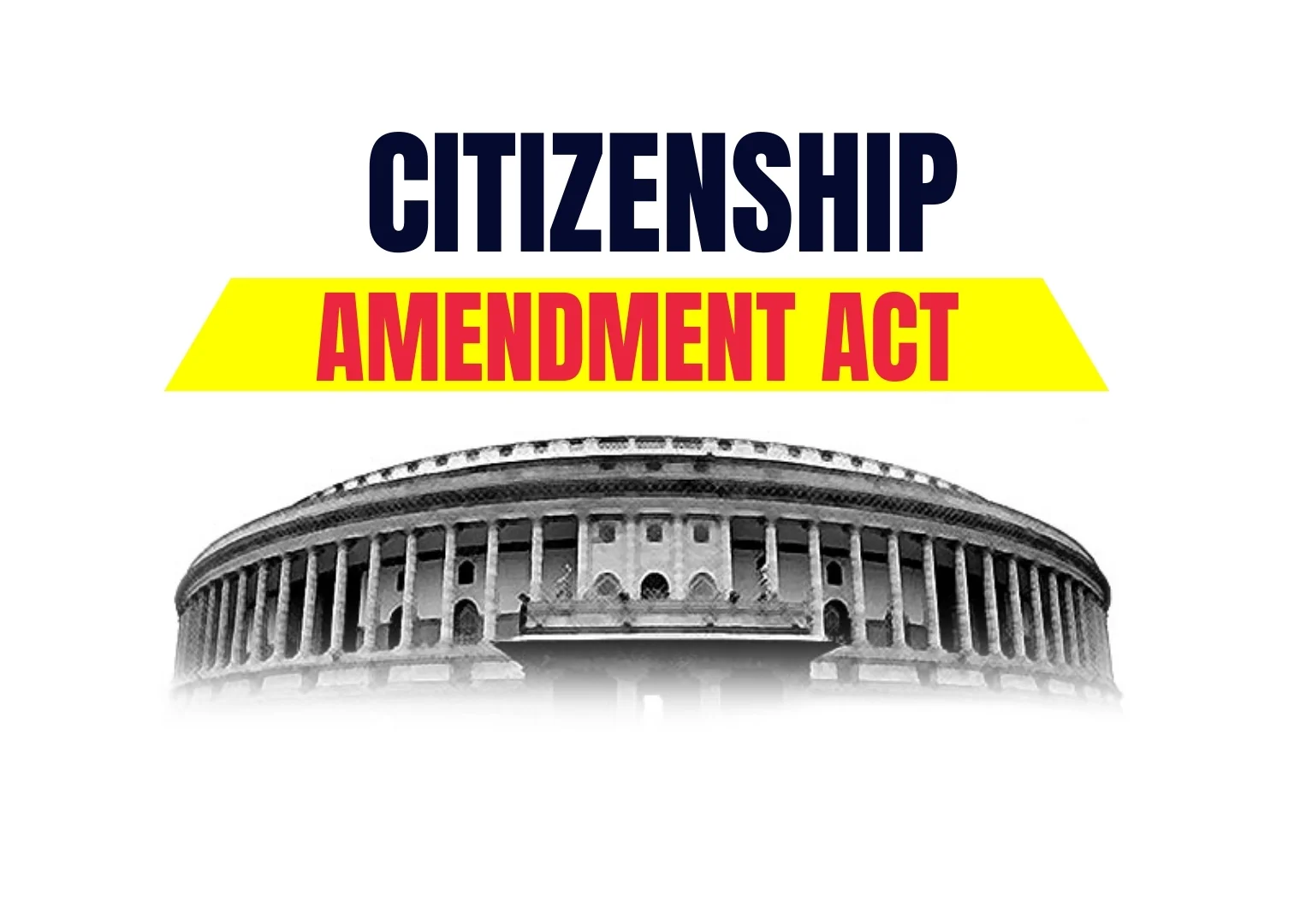
The Assam Accord of 1985 emerged against the backdrop of widespread unrest and a prolonged agitation in Assam, which was primarily focused on the issue of illegal immigration from Bangladesh. The unrest, which lasted from 1979 to 1985, was rooted in the demographic changes caused by decades of migration, leading to fears among the Assamese population about the dilution of their identity, culture, and political representation.
Background of Assam Accord, 1985:
-
- Colonial Era and Migration: Migration into Assam had historical roots dating back to the British colonial period. During British rule, migrants from other parts of India and neighbouring East Bengal (now Bangladesh) were encouraged to settle in Assam for labour, particularly in tea plantations and agricultural work.
- Post-Partition Migration: The partition of India in 1947 led to a surge in migration from East Pakistan (later Bangladesh) into Assam. Over the years, the migration continued, particularly after the 1971 Bangladesh Liberation War, which resulted in a significant number of refugees entering Assam.
- Political Discontent: By the late 1970s, the Assamese population grew increasingly concerned that the large influx of illegal immigrants from Bangladesh was not only altering the demographic makeup but also impacting electoral politics, with fears that immigrants were being included in voter lists. This led to widespread resentment and discontent, particularly in light of the 1978 Lok Sabha by-election in Mangaldoi, where voter lists showed significant discrepancies.
- Launch of Assam Movement (1979-1985):
- The issue of illegal immigration sparked a mass political movement led by the All Assam Students’ Union (AASU) and the All Assam Gana Sangram Parishad (AAGSP). The movement demanded the detection, disenfranchisement, and deportation of illegal immigrants, and it quickly gained support across Assam. This led to protests, strikes, boycotts, and even violence in some instances.
- The Assam Movement was a non-violent agitation initially, but as it progressed, it led to civil disobedience, disruption of elections, and violent clashes. The Nellie massacre of 1983, in which over 2,000 people, mostly Bengali Muslims, were killed, was one of the darkest episodes of this period.
- Political and Ethnic Tensions: The agitation widened the rift between the Assamese population and the immigrant communities, particularly Bengali-speaking Muslims and Hindus. The growing tension disrupted the state’s economy and governance and drew the central government’s attention.
- Efforts to Resolve the Issue: Several rounds of negotiations between the agitators and the Indian government failed to achieve consensus until 1985. Following the assassination of Prime Minister Indira Gandhi in 1984, her successor, Rajiv Gandhi, took the initiative to resolve the issue. After prolonged discussions, the Assam Accord was signed on August 15, 1985.
Important provisions of the Accord:
-
- Detection and Deportation of Illegal Immigrants:
- All foreigners who entered Assam after March 25, 1971, were to be detected and deported in accordance with the law.
- Those who entered between January 1, 1966, and March 24, 1971, were to be identified, and their names deleted from the electoral rolls. They would be allowed to reside in Assam but denied voting rights for 10 years.
- Grant of Citizenship: Migrants who entered Assam before January 1, 1966, were to be granted full Indian citizenship, including voting rights, recognizing their long-standing residency.
- Safeguarding Assamese Identity:
- Constitutional, legislative, and administrative safeguards were to be provided to protect the cultural, social, and linguistic identity and heritage of the Assamese people.
- This included the promotion of the Assamese language, literature, and the arts.
- Economic Development of Assam:
- Special programs for the economic development of Assam were promised. The government committed to addressing the socio-economic grievances of the state by developing its infrastructure and economy.
- The establishment of oil refineries, paper mills, and other industries was planned to promote Assam’s growth.
- Prevention of Future Illegal Immigration:
- Sealing the Indo-Bangladesh border to prevent further illegal immigration. Measures like fencing, increased surveillance, and deployment of Border Security Forces (BSF) were proposed.
- This also included the construction of border roads and the strengthening of river patrolling along the border.
- Updating National Register of Citizens (NRC): The government agreed to update the National Register of Citizens (NRC) for Assam, with 1971 as the cutoff year, to identify genuine citizens and illegal immigrants.
- Restoration of Normalcy and Peace:
- The accord emphasized restoring law and order, normalizing relations between different ethnic groups, and ending the period of political instability.
- Withdrawal of the cases against agitators involved in the Assam Movement, except for those involved in heinous crimes.
- Rehabilitation of Displaced Persons: The government also committed to rehabilitating people affected by the violence during the Assam agitation, particularly those who were displaced or victimised.
- Non-Discriminatory Treatment of All Citizens: It was also stipulated that all Indian citizens, irrespective of origin, would be treated equally under the law and would not face discrimination on the basis of their place of origin.
- Detection and Deportation of Illegal Immigrants:
The Assam Accord was a response to the demographic fears, political unrest, and ethnic tensions that had arisen from illegal immigration into Assam, and it sought to restore peace by addressing these concerns through political and legal measures. However, the complexities of implementing its provisions, particularly around identifying and deporting immigrants, remain contentious to this day.
Spread the Word



